-
Latin America
Latin America
- Countries (hidden space)
- Galapagos & Ecuador
- Guatemala
- Mexico
- Panama
- Peru
- Popular Attractions
- Machu Picchu
- Inca Trail
- Easter Island
- Galapagos Islands
- Patagonia
- Rio de Janeiro
- Iguazu Falls
-
Africa
Africa
- Spacer Africa
- South Africa
- Zimbabwe
- Popular Attractions
- Cape Town
- Okavango Delta
- Sossusvlei Dunes
- Victoria Falls
- The Kruger
- The Garden Route
- Masai Mara
-
Asia
Asia
- Spacer Asia
- Laos
- Sri Lanka
- Uzbekistan
- Vietnam
- Popular Attractions
- Taj Mahal
- Lion Rock (Sigiriya)
- Angkor Wat
- Ha Long Bay
- Kyoto
- Europe & Middle East
-
Destinations
- Latin America
- Argentina
- Bolivia
- Brazil
- Chile
- Colombia
- Costa Rica
- Galapagos & Ecuador
- Guatemala
- Mexico
- Panama
- Peru
- Asia
- Cambodia
- India
- Japan
- Laos
- Sri Lanka
- Uzbekistan
- Vietnam
- Middle East
- Jordan
- Southern & East Africa
- Botswana
- Kenya
- Namibia
- South Africa
- Zimbabwe
- Europe
- Slovenia
- All Holiday Destinations
- Contact Us
-
About
About
Llama Travel provides high quality holidays at the lowest possible prices.
99% recommend us Lower prices - guaranteed Financially protected by ATOL
The Llama Travel Blog
Latin American Holidays: Top Picks For 2020
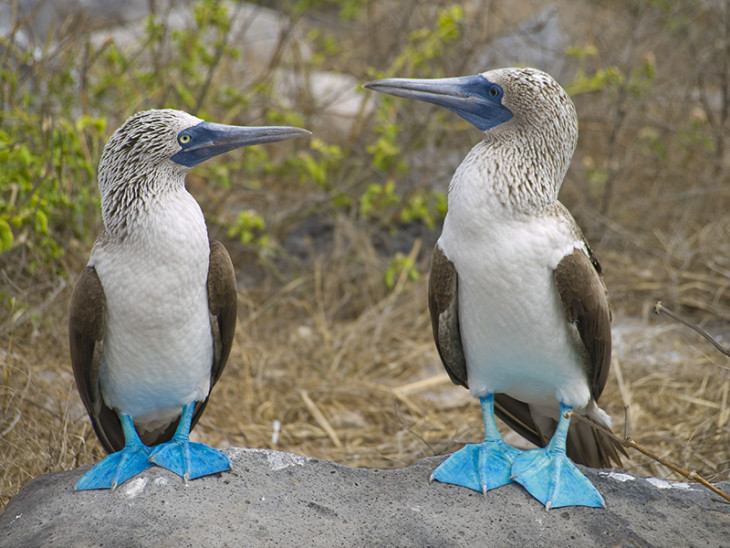
From dense jungle and soaring peaks to ancient archaeological sites and colonial cities, Central and South America boast a variety of destinations that appeal to many walks of life. Depending on your interests you might prefer to relax on a rainforest-fringed beach or visit a traditional community in a remote location. With this in mind, we’ve compiled a list of our top picks for 2020.
Top Country - Costa Rica
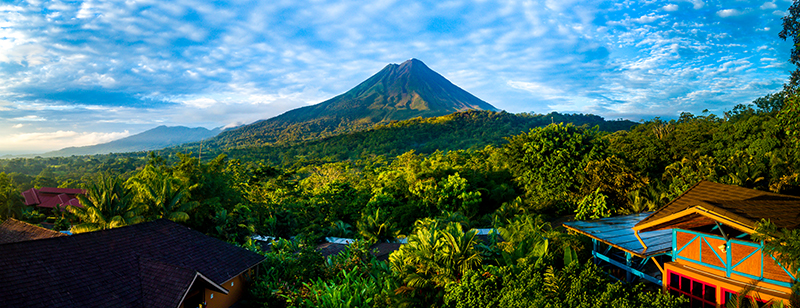
If you are interested in seeing genuine climate action, Costa Rica is the place to explore. It has recently been given the 2019 Champions of the Earth award for its efforts in environmental protection and the fight against climate change. According to Lonely Planet, it flies the flag for sustainable tourism, with 90% of their energy coming from renewable sources and the possibility of becoming one of the first carbon-neutral countries in 2020. Costa Rica offers something for everyone - in an area only two and a half times the size of Wales, you’ll find smoking volcanoes, verdant rainforests, stunning tropical beaches and beautiful cloud forests.
Read our blog to find out our Top Ten Reasons to visit Costa Rica.
When to go: Temperatures are warm throughout the year, with the wettest period being between May and November.
Top Town - Paraty
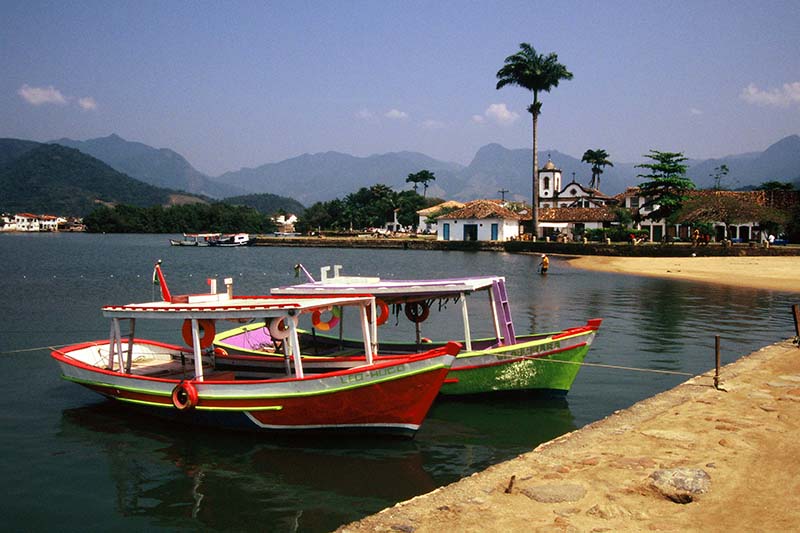
With Paraty and Ilha Grande being awarded the first mixed UNESCO World Heritage Site in Brazil, the country is set to have a big 2020 for tourism. A short drive from the bustling city of Rio de Janeiro, Paraty sits on Brazil's Emerald Coast, a lush, green stretch of coastline. It is a delightful place to spend a few days, thanks to the relaxed atmosphere and pretty surroundings. Brightly coloured doors and window frames are typical in the town's main area, which is a maze of cobblestone streets traversed by horse-drawn carriages, alongside white-sand beaches, waterfalls and brightly coloured schooner boats lining the harbour. One of the most unique things about Paraty is that the pavements are built a foot above the streets, which are flooded during high tide due to the town's position below sea level. Known as 'Brazil's Venice', Paraty becomes a surreal scene of beautifully painted buildings being reflected into the water when the tide rolls in.
Click here to see our Samba, Tango & Iguazu Falls + Colonial Paraty holiday.
When to go: Temperatures in Paraty are similar to Rio. Daytime temperatures range between 20˚C and 35˚C and night-time temperatures rarely drop below 15˚C. It can rain at any time, though it is more likely from October to March.
Top Region - The Amazon Jungle
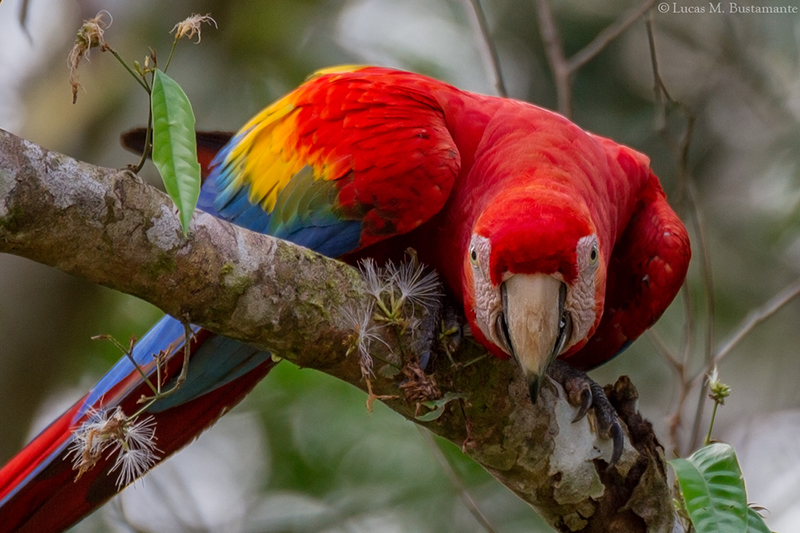
The Amazon Jungle showcases the natural world at its purest – home to some of the planet’s rarest species, and communities that live in harmony with their surroundings, using traditional methods to survive. As the climate shifts and large parts of the jungle become more and more threatened, conservation is paramount. Many jungle lodges and tourism organisations are working hard to support sustainable tourism more than ever in 2020. Puerto Maldonado in Peru is one of the most biodiverse regions on the planet. The pristine location of the Tambopata Research Center (featured recently on David Attenborough’s ‘Seven Worlds, One Planet’) in one of South America’s most remote areas means that it is teeming with flora and fauna - home to over 1,000 species of butterflies, 100 species of mammals, 600 species of birds, and hundreds of species of trees and plants. Wake up to the sounds of monkeys and parrots then spend each day doing jungle excursions - visit the world's largest macaw clay lick, go on boat rides in search of sloths and jaguars and trek through the jungle at night to spot frogs and tarantulas with a flashlight. One of the projects they work on is the macaw project, studying the clay lick and behaviour of the macaws that nest and feed in the area.
Click here to compare our Amazon lodges.
When to go: It is hot and humid all year round, with November to March being the wettest period. Between May and September, temperatures can drop to 5-10 ̊C.
Top City - La Paz
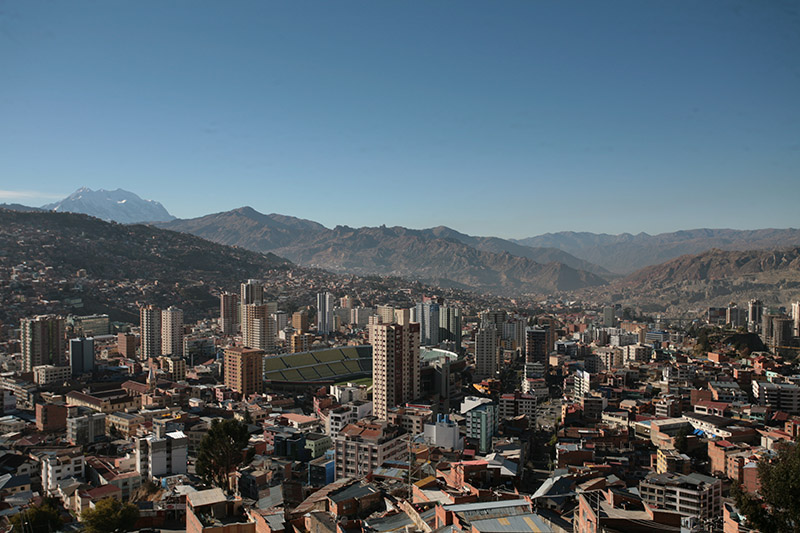
At over 3,600 metres above sea level, La Paz is the highest city in Bolivia and in the world. Whilst many South American cities blend into one, La Paz stands out for its eerie witch markets, indigenous fruit markets and what’s being coined as the most innovative transport system in the Americas. Constructed in 2014, Mi Teleférico is a 23km Austrian-built network of cable cars strung above the city, overlooking the busy streets and bustling markets with a mountain backdrop. The city is soaring to new heights and in 2020 there will be 11 cable car lines, having started with just three. Taking a scenic ride in these silent and spotless cabins, which costs just three bolivianos (33p) per line, is an excellent way for tourists to see the city, and for locals to enjoy a spectacular commute. Given that the city is spread over a deep, wide canyon with different parts ranging from 3,170 to 3,600 metres above sea level, this is also a good way to cope with the altitude.
Click here to see all our Bolivia Holidays.
When to go: La Paz tends to be dry and sunny throughout the year, although it can get quite chilly. November is the warmest month, with average temperatures of 12˚C, whilst July is the coldest, with average temperatures of 7˚C.
Top Natural Wonder - Iguazu Falls
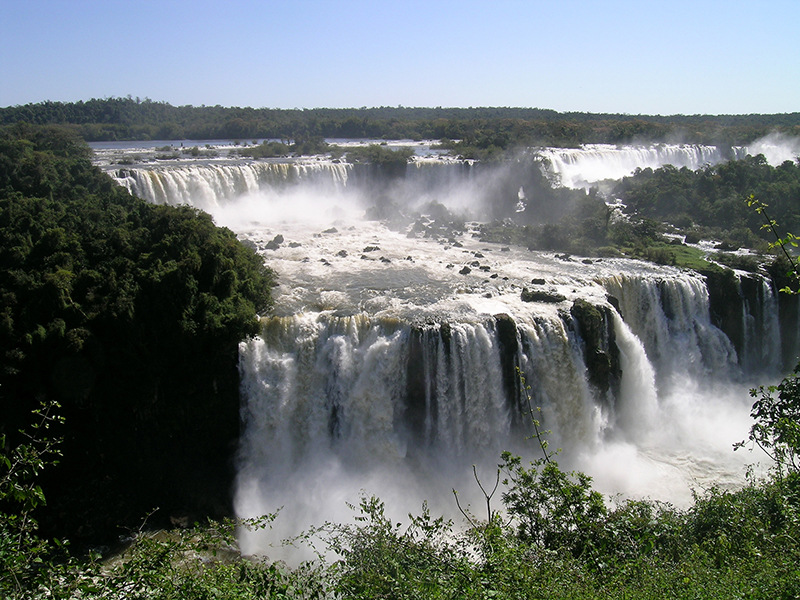
Spanning across three countries, Iguazu Falls make up the largest waterfall system in the world and is truly a natural wonder to behold. Apart from seeing the falls from the walkways, it is possible to take an adrenalin-filled, and drenching, boat ride to the base of the falls. There are also forest trails, allowing you to enjoy the jungle scenery and spot some of the wildlife including toucans, butterflies, coatis, monkeys and caimans.
Read our blog to find out the differences between the Argentina and Brazil side of Iguazu Falls.
When to go: It is generally hot and humid throughout the year, with October-April being the warmest time of year. The water flow is strongest between October and February, meaning they are at their most impressive.
Top Experience - Lake Titicaca
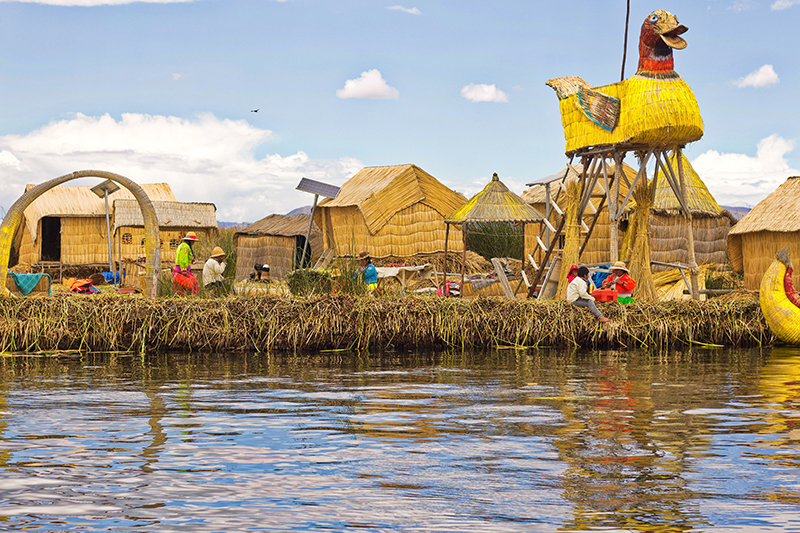
Known for being the highest navigable lake in the world, Lake Titicaca forms the border between Peru and Bolivia. The floating Uros Islands are made from reeds grown on the lake, and the islanders use them for food and to make boats, which you can ride in. Many of the islanders still live using traditional customs, and fishing is the most important activity for them, with the daily catches being sold in the market in Puno. When you visit the Uros, you will notice that there are mostly women and children on the islands. This is because the men are busy fishing on the lake. You can enjoy fresh fish for lunch when you visit Taquile Island, where the islanders have established their own distinct culture and produce some of Peru’s finest handicrafts.
View all our Lake Titicaca holidays here.
When to go: In the dry season from April to October, it is sunny and warm during the day (around 16 - 20 ̊C), but night-time temperatures can drop below freezing. March and November are the beginning and end of the dry season, and the weather is more changeable. In the wet season, from December to February, it can rain heavily.
Top Beach - Tayrona National Park
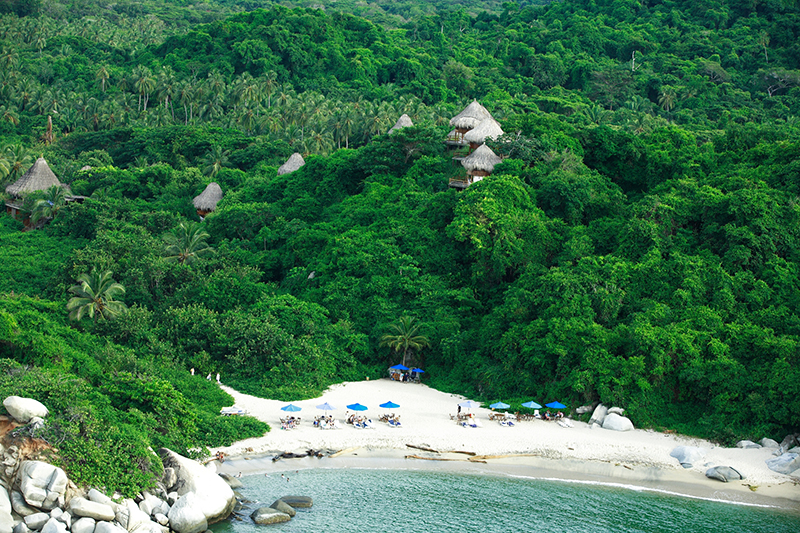
Tayrona National Park is one of the most beautiful and idyllic areas of Colombia, where Caribbean beaches, tropical rainforest and enormous rounded boulders blend together to form a lush tropical paradise. As Colombia still has a lingering negative reputation and Tayrona has only recently emerged as a tourist destination, the beaches are usually gloriously quiet and it is a good idea to book a trip there before more people discover it. Aside from the beaches, Tayrona National Park is also a great place for wildlife, with dusky titi monkeys, red woodpeckers, iguanas, a variety of lizards, tropical marine life, and more than 400 species of birds. There are various walks and hiking opportunities in the park, and waterfalls and archaeological remains can also be found.
Click here to find out why Colombia should be on your list.
When to go: Temperatures don’t tend to drop below 20°C throughout the year, with the hottest and most humid time being December – March.
Top Journey - Bolivia to Chile
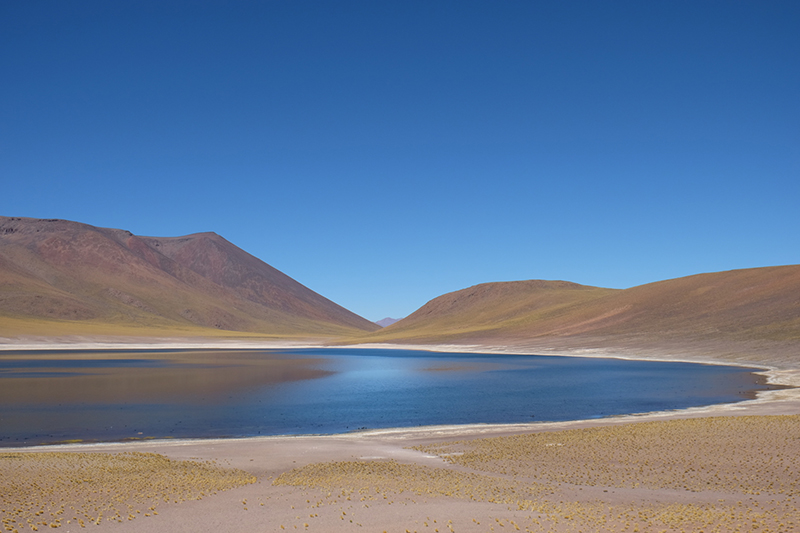
Travelling overland between Uyuni and San Pedro de Atacama is an unforgettable experience, offering surreal scenery you will be disappointed to leave behind. The two-night journey takes you across the salt flats and highlands from Bolivia to Chile, passing through an eerie train cemetery, salt-processing plant, cactus island in the middle of the salt flats, rural villages, a valley where wind erosion has formed bizarrely-shaped rocks, a canyon, multiple lagoons with abundant wildlife, geysers, thermal springs and more. This journey is all about appreciating the plethora of landscapes, many of which are so surreal that they resemble a painting. In fact, in Bolivia’s Fauna Andina Eduardo Abaroa National Reserve, there is a surreal, barren, wind-swept swath of land that has been frequently compared to a Salvador Dalí painting.
Click here to read our blog about the journey.
When to go: Uyuni has a generally dry, sunny climate with average day-time temperatures in the mid-teens, dropping as low as -13 degrees at night. The rainy season is from November to March. In San Pedro, the weather is usually very dry with no clouds in the sky, with daytime highs of 20°C – 25°C.
Top Cuisine - Oaxaca
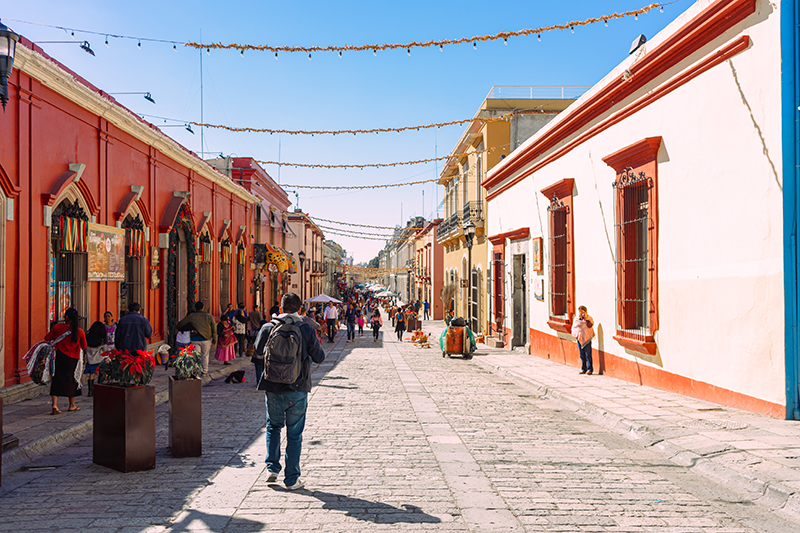
Travel and cuisine go hand-in-hand, and many people love trying new things whilst abroad. Mexico is the only country in the world whose cuisine is protected under the UNESCO Heritage scheme, and the country's culinary heartland and foodie capital is undoubtedly Oaxaca. The 18 different indigenous cultures have brought their own languages, customs, cooking methods and ingredients to create a unique combination of native and Hispanic flavours. As well as trying the delicious local food at the bustling market, where you can people-watch whilst tucking into a corn tortilla loaded with toppings, you can try your hand at creating some authentic dishes on a cooking class.
You can sample Oaxaca's rich flavours here.
When to go: Oaxaca has a tropical savannah climate, with warm temperatures year-round, made more pleasant by the city’s altitude. Nighttime temperatures are cool, dropping into single figures during winter, from November to March. The winter months are very dry, but a rainy season occurs during summer from April to October.
Top Wildlife - Galapagos Islands
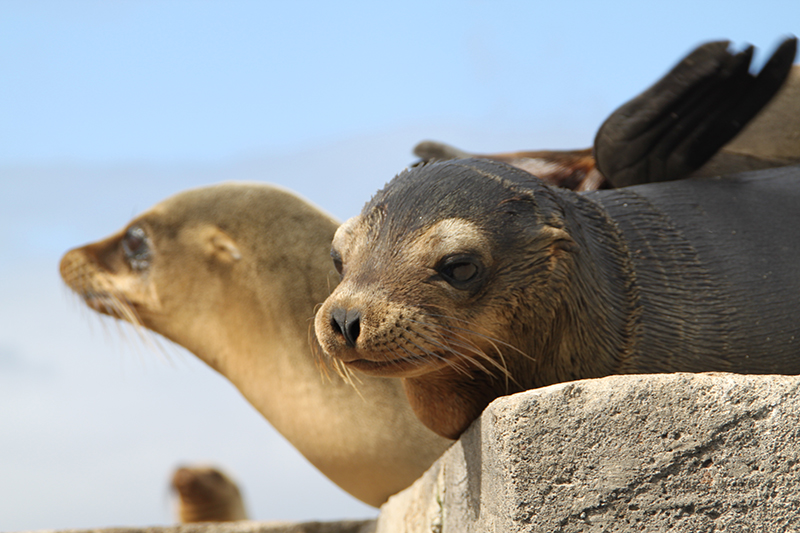
The Galapagos Islands will always be a hard one to beat when it comes to wildlife. Famous for providing inspiration for Darwin’s ground-breaking Theory of Evolution, the Galapagos was the first ever UNESCO World Heritage Site. The islands have no natural predators, meaning that the animals are not afraid of humans. This way, you have the opportunity to observe different land and marine creatures, as well as birds, at incredibly close quarters. Some of the wildlife you are likely to see on the Galapagos Islands include frigate birds, Galapagos penguins, sea lions, flightless cormorants, turtles, giant tortoises, land and marine iguanas, dolphins, sharks and three species of booby. Marine biologists and researchers are working hard to preserve the islands and constantly making new discoveries. Back in February, a giant tortoise was spotted on the volcanic island of Fernandina, after not being seen for more than 110 years and feared to be extinct. Plus, the mangrove areas of the archipelago have increased by 25% in the last ten years, meaning abundant flora and fauna can thrive.
Click here to learn more about the wildlife on the islands.
When to go: December to May is the hottest time of year with temperatures during the day between 25-30°C, with warmer sea temperatures. It can rain at this time of year. June to November is cooler and the weather can be misty with day temperatures ranging between 20-25°C. The sea is also cooler at this time. It rarely rains at this time of year.
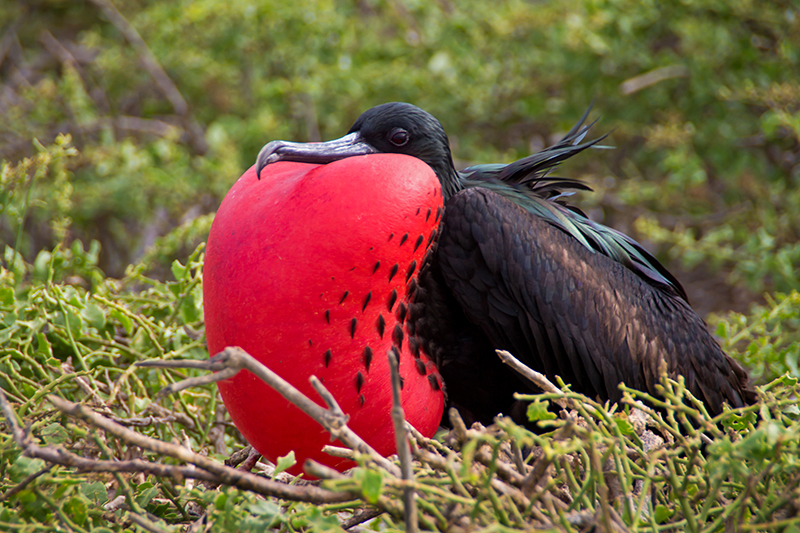
Feeling inspired to travel to Latin America in 2020? Click here to order a free brochure, browse our website or give us a call on 020 7263 3000 to speak to an expert.
Found this blog useful? Sign up to our newsletter for more holiday tips and advice!
